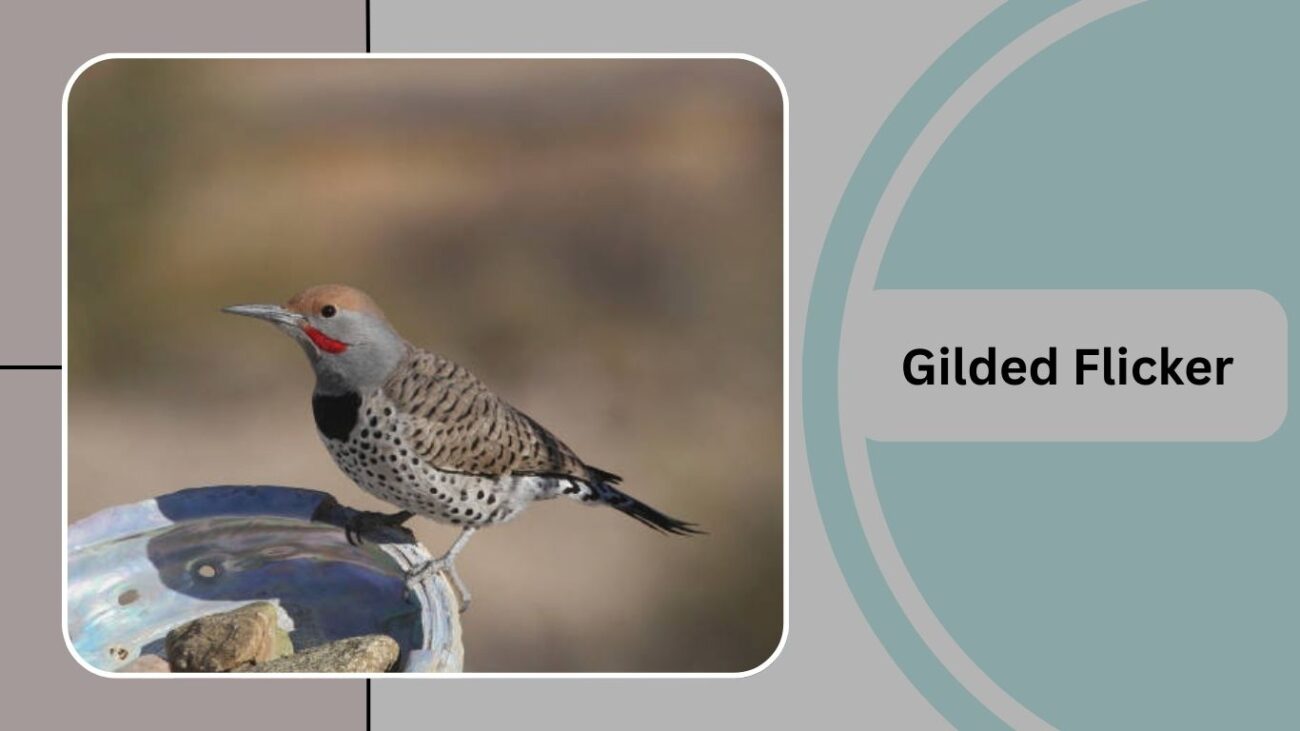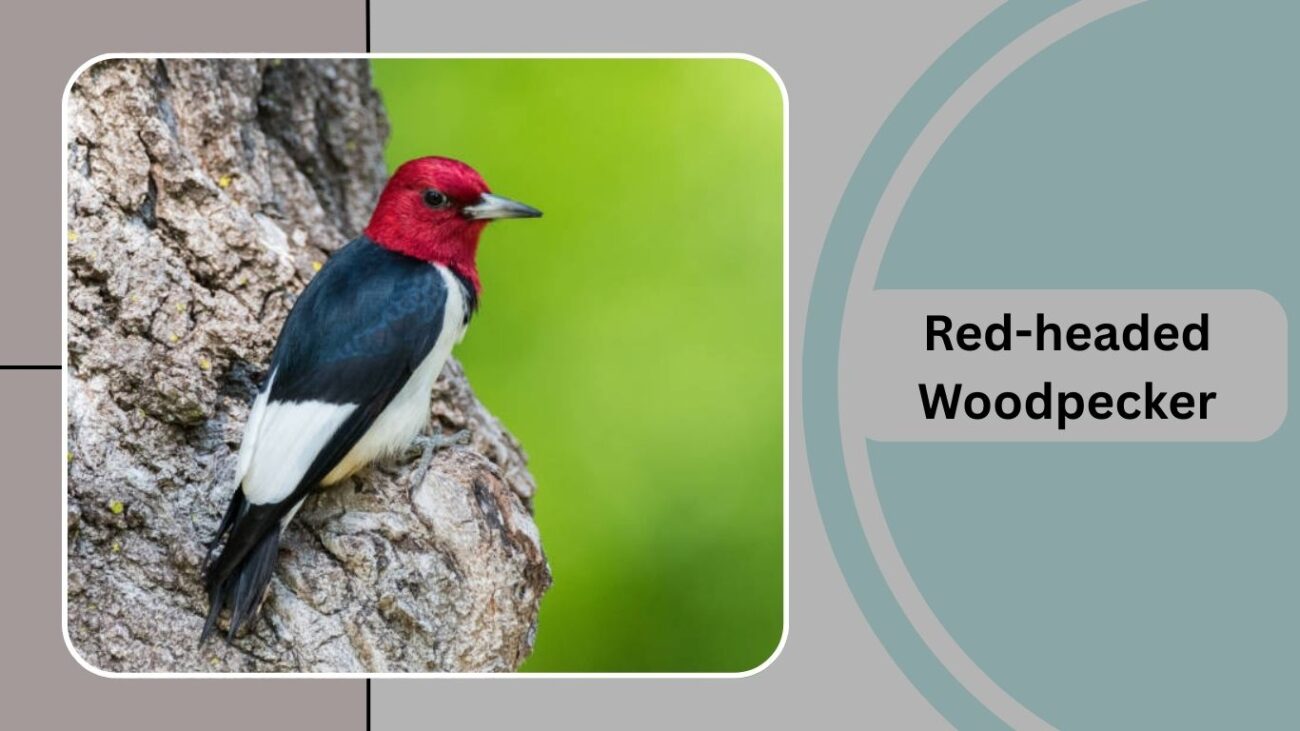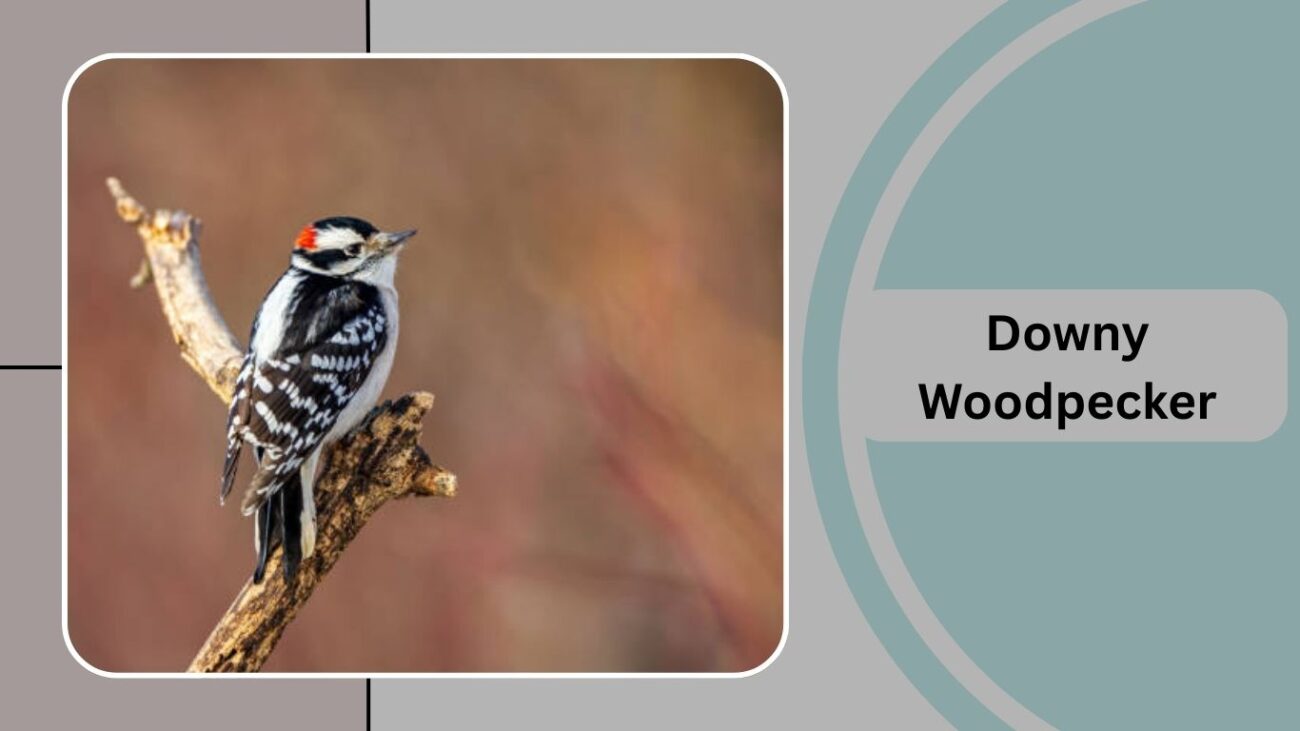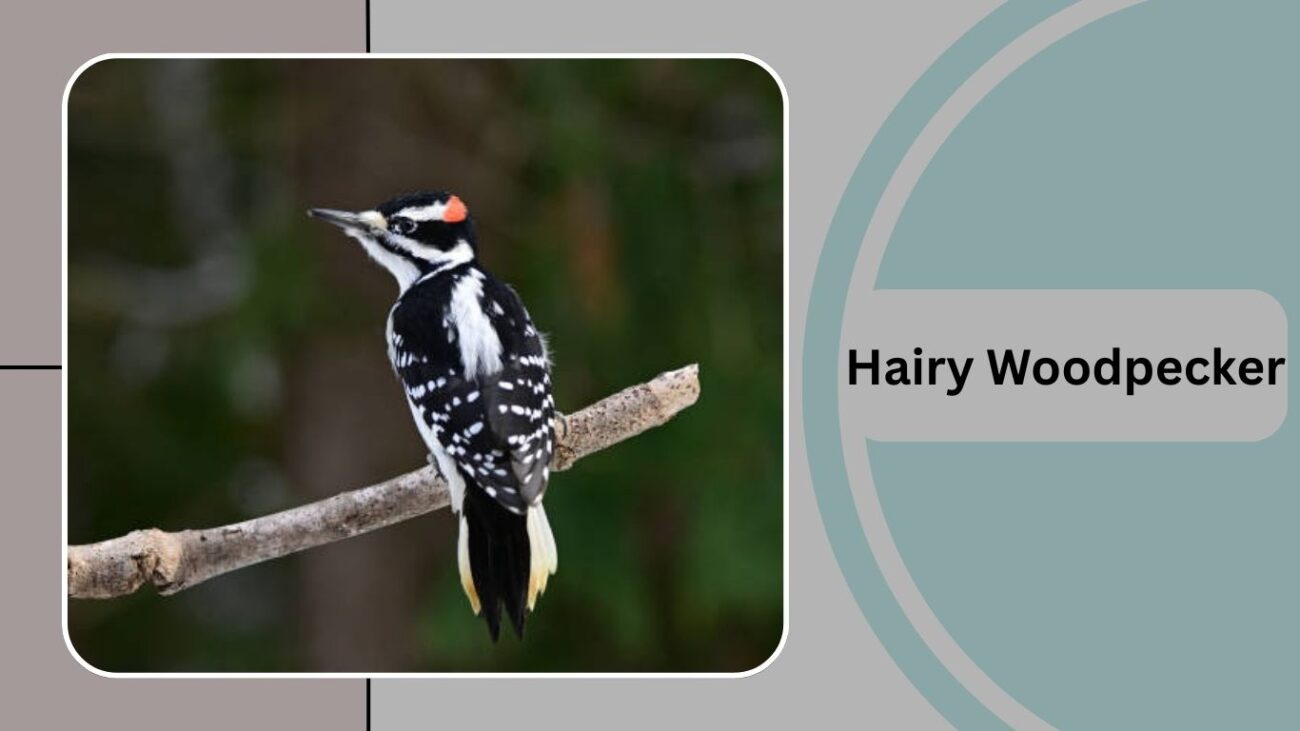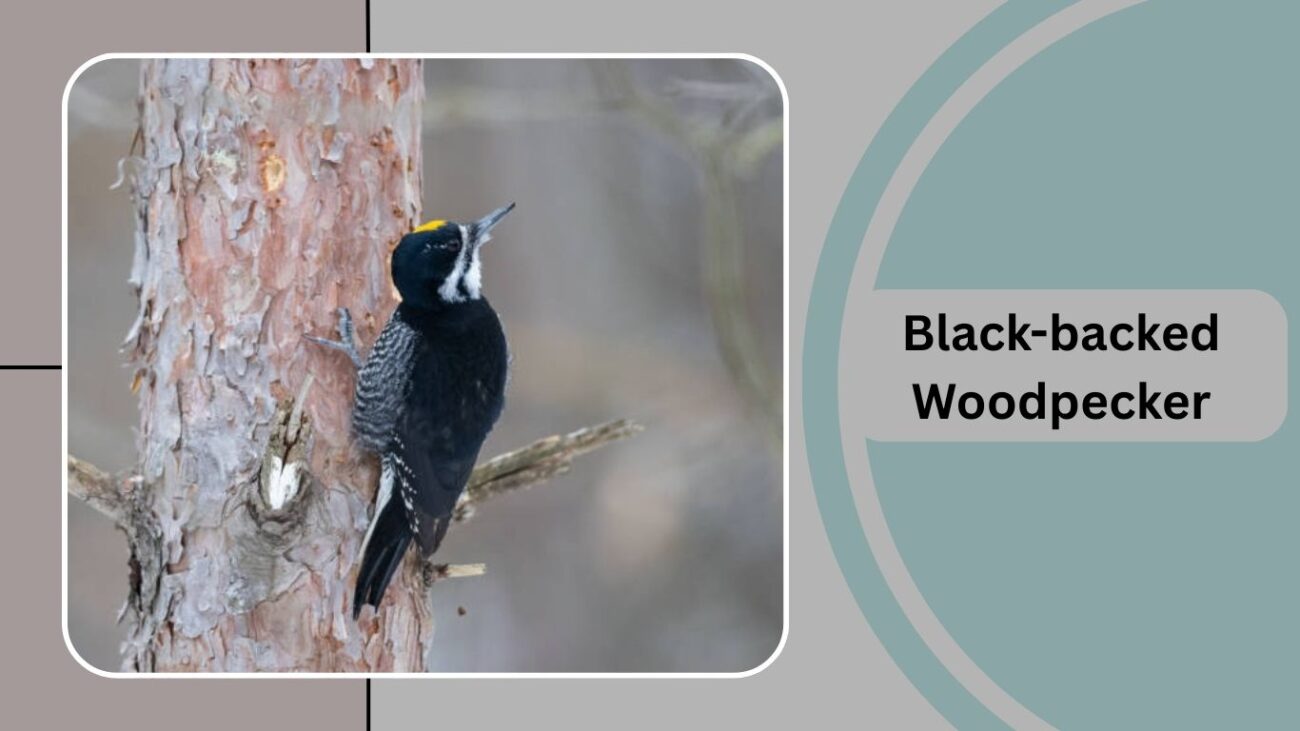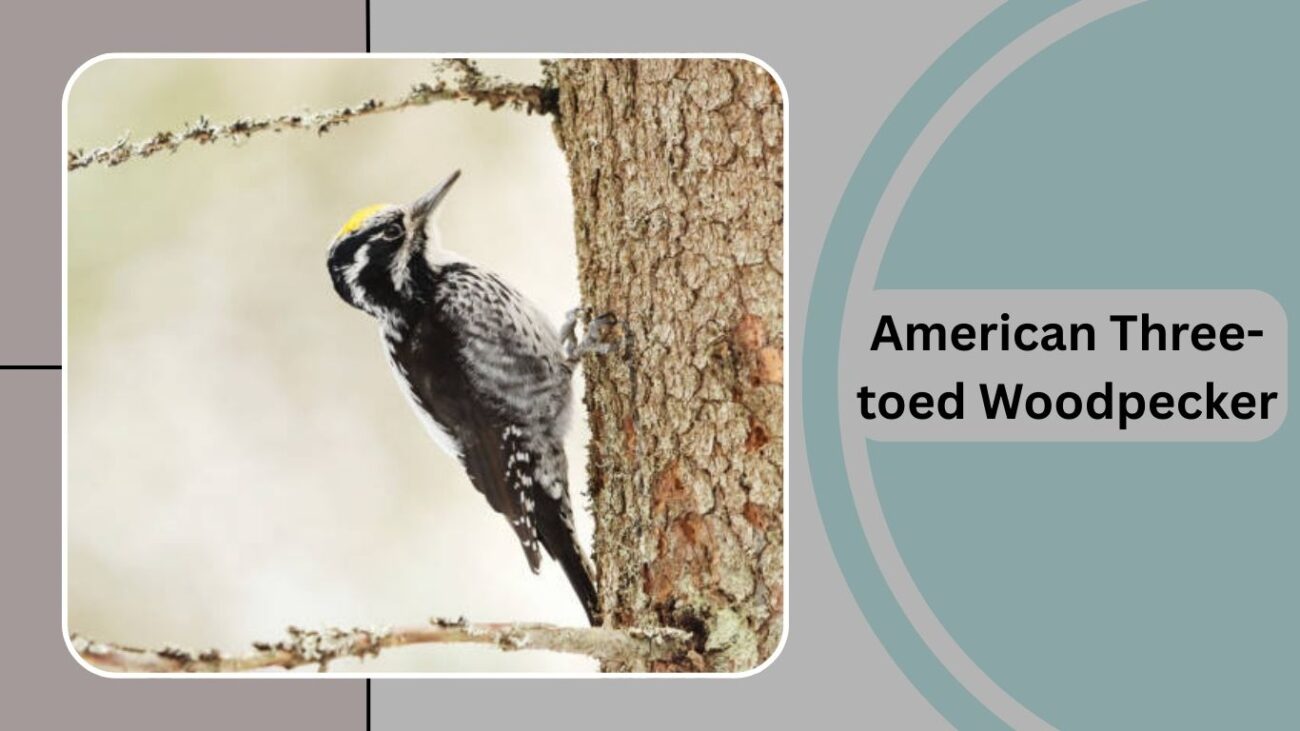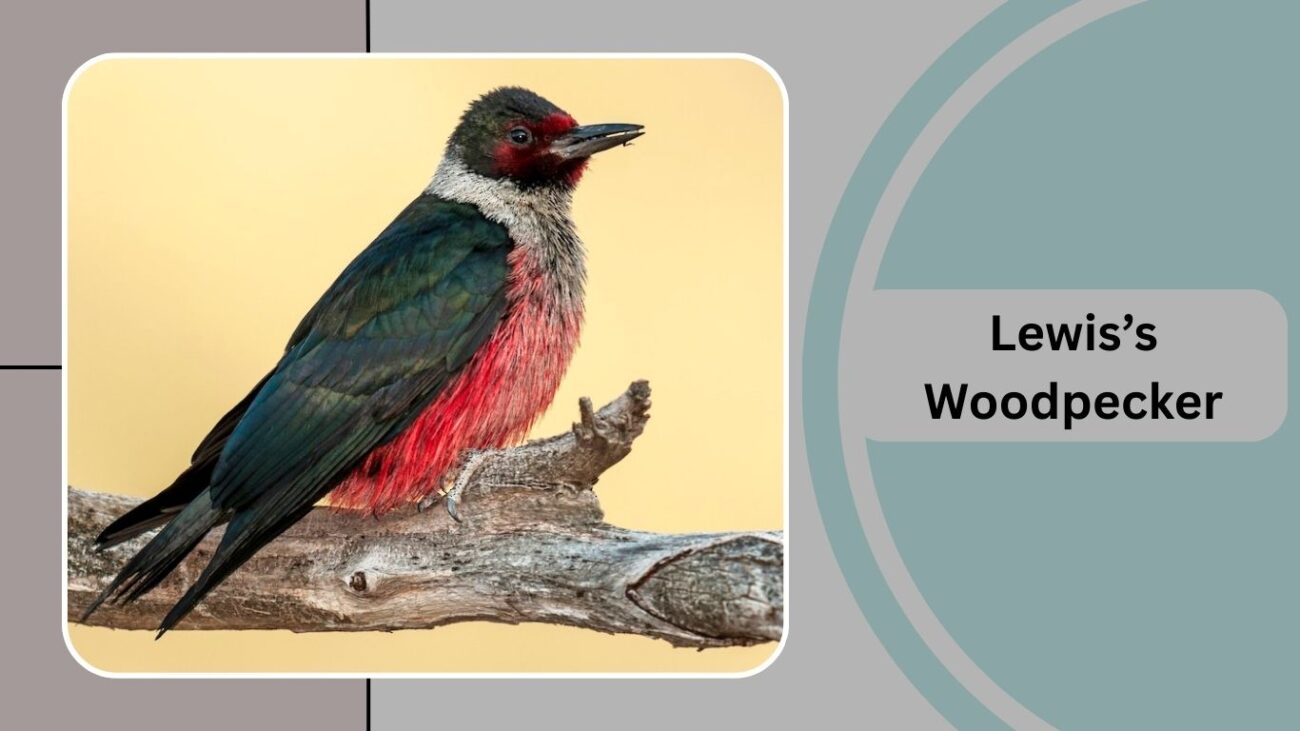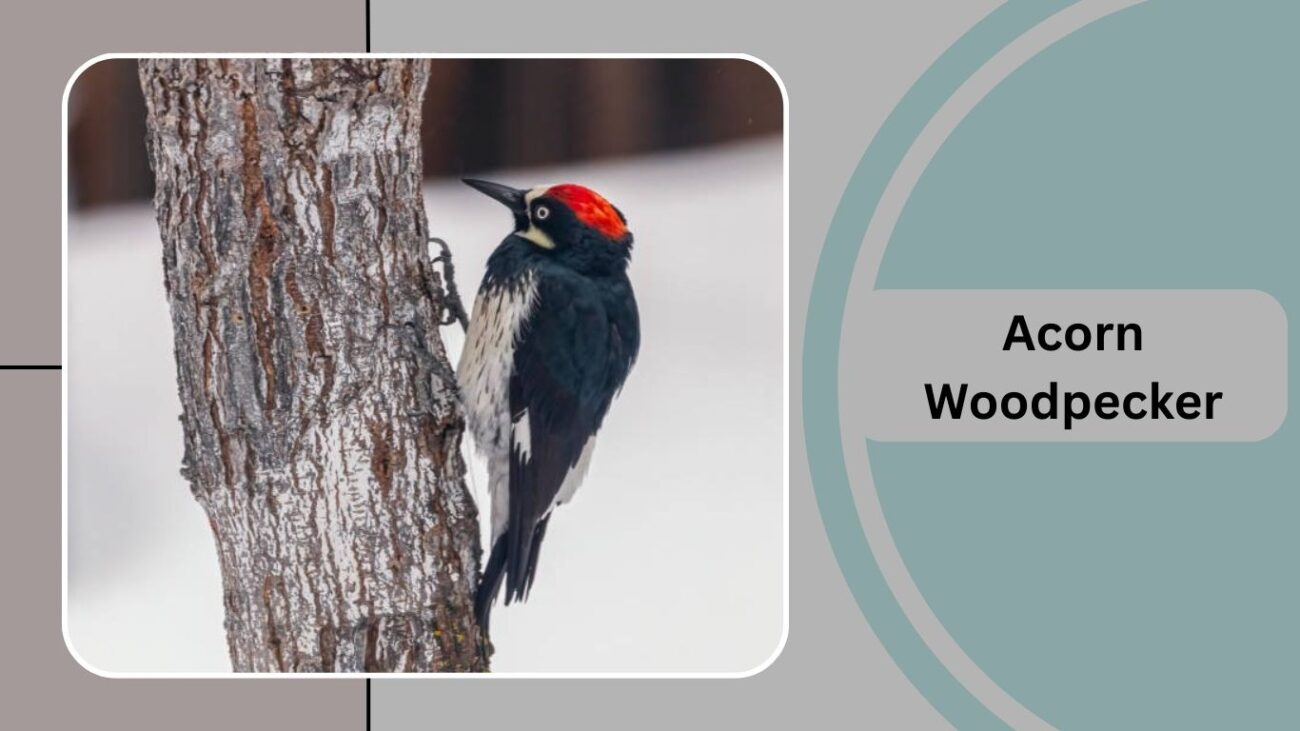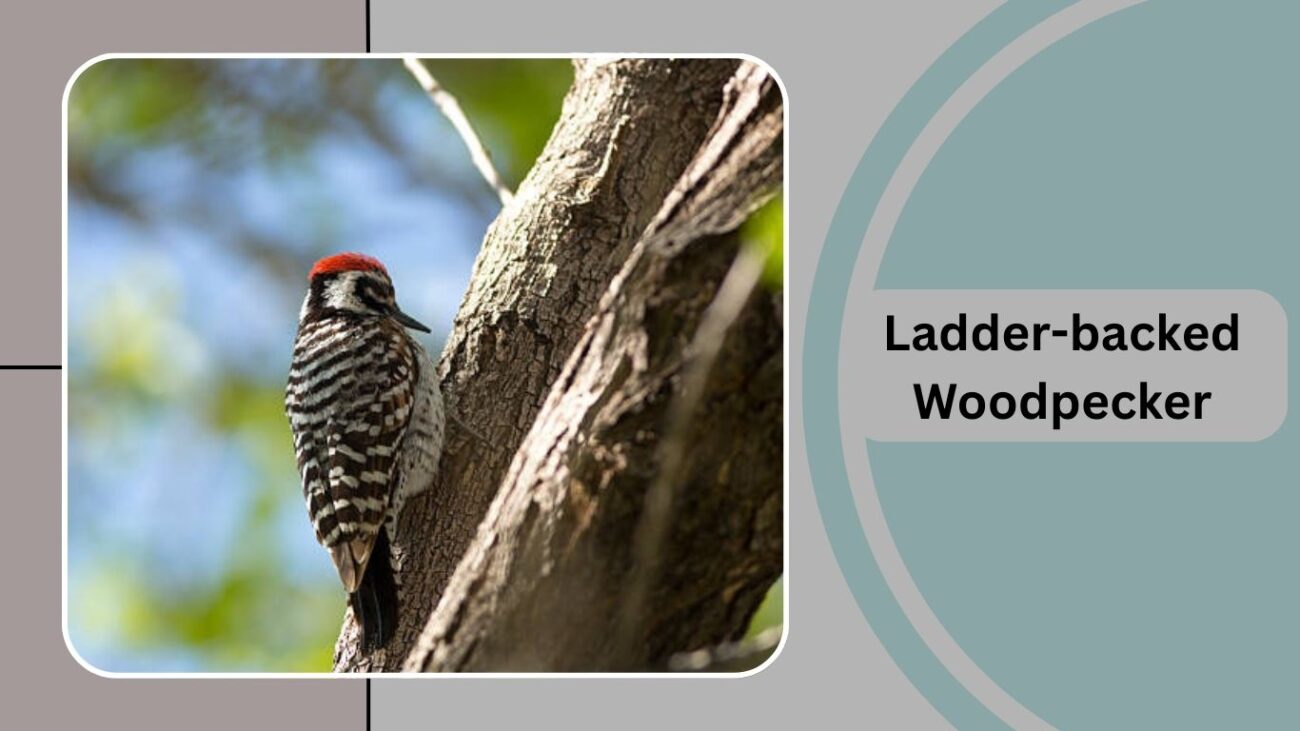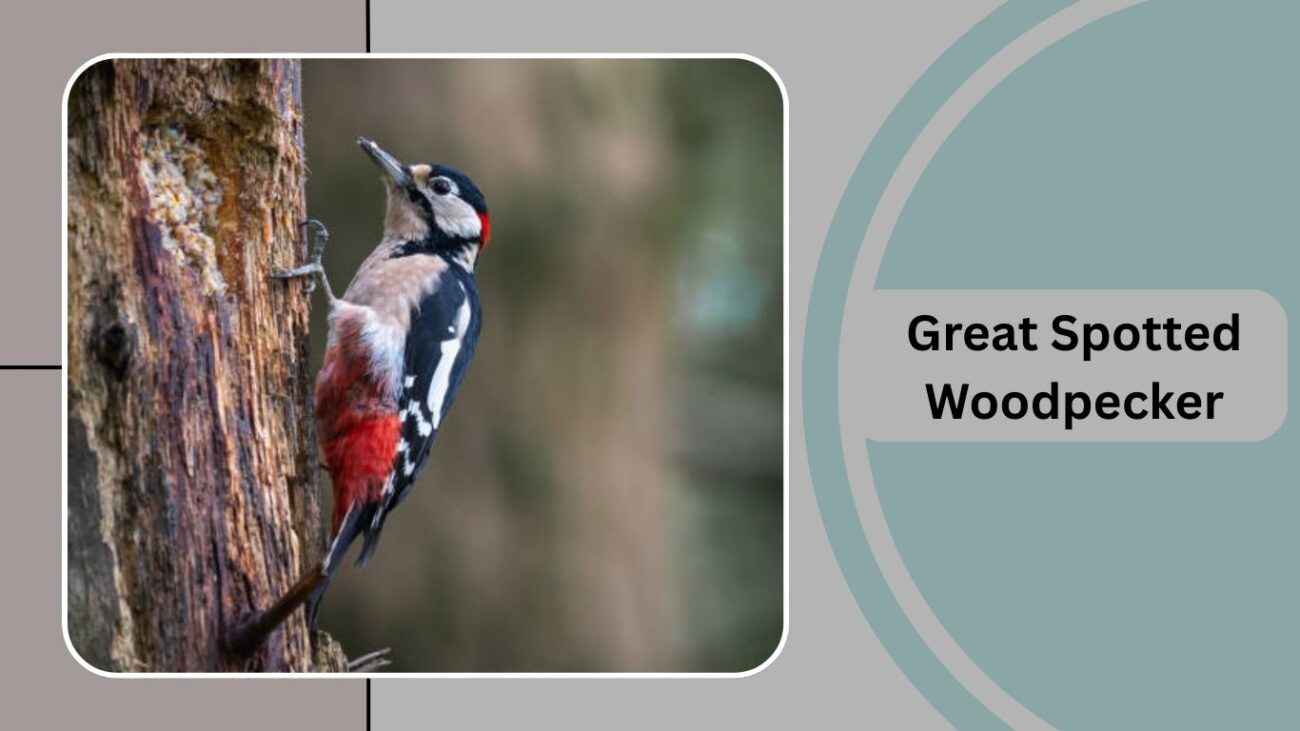The Northern Flicker is one of the most distinctive woodpeckers in North America, known for its spotted chest, barred wings, and habit of foraging on the ground for ants and beetles. However, its size, markings, and woodpecker stance often lead to confusion with other species. From close relatives like the Gilded Flicker to smaller woodpeckers and even sapsuckers, many birds share similar features that make quick identification tricky. In this guide, we’ll explore 15 birds that look like Northern Flicker, highlighting their key traits, behaviors, and habitats to help you tell them apart in the field.
1. Gilded Flicker
The Gilded Flicker (Colaptes chrysoides) is one of the closest birds that look like Northern Flicker, often confusing birdwatchers because of its nearly identical size, shape, and behavior. Both species belong to the woodpecker family and share barred backs, spotted underparts, and strong, slightly curved bills. What makes the Gilded Flicker distinct is the golden-yellow underwings and tail feathers, which replace the red or yellow seen in the Northern Flicker.
Identification
- Brownish back with dark barring, similar to the Northern Flicker.
- Spotted white underside with a black crescent across the chest.
- Golden-yellow wing linings and tail feathers.
- Slightly paler face with a red mustache stripe in males.
Behaviors and Diet
Like the Northern Flicker, the Gilded Flicker spends much of its time on the ground, searching for ants, beetles, and other insects. It also feeds on fruits and seeds, especially cactus fruits in its desert habitat. Its drumming and loud calls are typical of flickers, adding to the resemblance.
Habitat and Range
This bird is native to the deserts of the southwestern United States and Mexico, especially in areas with giant saguaro cacti. Its habits and markings make it one of the most convincing birds that look like Northern Flicker, especially at a quick glance.
2. Yellow-bellied Sapsucker
The Yellow-bellied Sapsucker (Sphyrapicus varius) is often mistaken as one of the birds that look like Northern Flicker because of its barred wings, spotted plumage, and woodpecker-like build. While smaller and slimmer, its patterned feathers and habit of clinging to tree trunks can cause confusion for birdwatchers.
Identification
- Black-and-white barred back and wings.
- White underside with faint streaks rather than bold spots.
- Red crown and throat patch in males, red crown only in females.
- Paler belly with a yellowish wash, giving it its name.
Behaviors and Diet
Yellow-bellied Sapsuckers are known for drilling neat rows of holes into tree bark to feed on sap and insects. Unlike Northern Flickers, which forage on the ground for ants, this bird prefers trees for feeding. Still, its shape and markings place it among birds that look like Northern Flicker.
Habitat and Range
They breed in Canada and the northeastern United States, migrating southward into the southeastern U.S., Mexico, and the Caribbean during winter. Their migratory patterns and mottled appearance often lead to confusion with flickers.
3. Red-bellied Woodpecker
The Red-bellied Woodpecker (Melanerpes carolinus) is another common species that falls into the category of birds that look like Northern Flicker. Although slightly smaller, its patterned back and reddish hues make it look similar, especially in wooded environments.
Identification
- Black-and-white barred back and wings.
- Pale underside with a faint reddish wash on the belly.
- Bright red cap extending from the bill to the nape in males, shorter in females.
- Stout bill and woodpecker posture like the Northern Flicker.
Behaviors and Diet
They forage on tree trunks and branches for insects, nuts, and seeds but also visit feeders for suet and sunflower seeds. Unlike Northern Flickers, they rarely forage on the ground, but their strong calls and drumming behaviors are similar.
Habitat and Range
Red-bellied Woodpeckers are widespread across the eastern and southeastern United States. Their barred backs and pale underparts make them easy to confuse with flickers, especially at a distance, reinforcing their spot among birds that look like Northern Flicker.
4. Red-headed Woodpecker
The Red-headed Woodpecker (Melanerpes erythrocephalus) is one of the more striking birds that look like Northern Flicker, though its bold coloration makes it stand out once seen up close. Both birds share similar size, shape, and woodpecker behaviors, which can lead to quick misidentification from afar.
Identification
- Entire head is bright crimson red.
- Black back with solid white wing patches, visible in flight.
- Underside pale and unspotted, unlike the Northern Flicker’s speckled chest.
- Strong, straight bill adapted for hammering into wood.
Behaviors and Diet
Red-headed Woodpeckers are highly versatile feeders. They eat insects, nuts, fruits, and seeds, and are also known to store food in tree crevices for later use. Unlike Northern Flickers, which mainly forage on the ground, Red-headed Woodpeckers spend more time on trunks and branches. Still, their size, stance, and powerful flight earn them a place among birds that look like Northern Flicker.
Habitat and Range
They are found in open woodlands, orchards, and forest edges across central and eastern North America. Their bold red heads usually give them away, but their silhouette and size create confusion with flickers at a distance.
5. Downy Woodpecker
The Downy Woodpecker (Dryobates pubescens) is a smaller species but still counted among birds that look like Northern Flicker because of its barred wings, white underside, and typical woodpecker behaviors. Its resemblance is more about general structure than exact markings.
Identification
- Black-and-white plumage with barred wings.
- White underside, lacking the spotting of a Northern Flicker.
- Males have a small red patch on the back of the head.
- Much smaller, around 6–7 inches compared to the flicker’s 11–12 inches.
Behaviors and Diet
Downy Woodpeckers feed on insects, larvae, and seeds, often visiting suet feeders in backyards. They cling to tree trunks and branches, using short, quick taps rather than the heavy drumming of flickers. Despite their smaller size, their markings and woodpecker behavior cause them to be mistaken as smaller birds that look like Northern Flicker.
Habitat and Range
They are widespread across most of North America, thriving in forests, parks, and suburban areas. While their size difference is clear up close, their quick movements and barred plumage create confusion with flickers when seen from afar.
6. Hairy Woodpecker
The Hairy Woodpecker (Dryobates villosus) is another smaller species often grouped with birds that look like Northern Flicker because of its barred black-and-white wings and overall woodpecker shape. It looks nearly identical to the Downy Woodpecker but is larger and more robust, which can make it resemble the flicker even more at a glance.
Identification
- Black-and-white plumage with bold wing bars.
- White underside without the heavy spotting of Northern Flickers.
- Males have a small red patch on the back of the head.
- Larger than the Downy Woodpecker, about 9–10 inches long.
Behaviors and Diet
Hairy Woodpeckers forage on trunks and large branches, hammering into wood for insects and larvae. They also consume seeds and suet from feeders. Unlike the Northern Flicker, they rarely feed on the ground, but their similar stance and tree-clinging habits often lead to confusion.
Habitat and Range
Found across most of North America, they inhabit forests, parks, and even suburban neighborhoods. Their black-and-white pattern and sturdy size make them one of the easier-to-misidentify birds that look like Northern Flicker.
7. Black-backed Woodpecker
The Black-backed Woodpecker (Picoides arcticus) is less common but still considered among birds that look like Northern Flicker due to its size, structure, and woodpecker habits. Although darker overall, its bold markings and foraging style can cause confusion.
Identification
- Entire back is solid black, unlike the barred back of the Northern Flicker.
- White underparts with faint streaks.
- Males have a small yellow crown patch.
- Similar size, reaching about 9–10 inches long.
Behaviors and Diet
This species specializes in foraging on recently burned forests, peeling bark to extract beetle larvae. Unlike Northern Flickers that hunt ants on the ground, Black-backed Woodpeckers are trunk specialists. Still, their size, upright stance, and contrasting plumage earn them a place on the list of birds that look like Northern Flicker.
Habitat and Range
They are found in boreal forests across Canada, Alaska, and parts of the northern United States. While their solid black back is a key difference, their silhouette and behaviors create occasional confusion with flickers.
8. American Three-toed Woodpecker
The American Three-toed Woodpecker (Picoides dorsalis) is another species that falls under birds that look like Northern Flicker, mainly because of its size, posture, and contrasting plumage. Though smaller and rarer, its patterned feathers and upright stance on trees can easily be confused with a flicker at a distance.
Identification
- Black-and-white barred back with a solid black central stripe.
- White underparts with light barring or streaks.
- Males show a yellow crown patch, females do not.
- Smaller than Northern Flickers, around 8–9 inches long.
Behaviors and Diet
They specialize in bark-foraging, stripping away outer layers of conifer trees to find beetle larvae. This is different from the Northern Flicker, which primarily digs into soil for ants. However, both species are adept at drumming on trees and share similar body language.
Habitat and Range
Found in boreal and montane coniferous forests across Canada, Alaska, and the northern U.S., particularly in areas disturbed by fire. Their smaller size sets them apart, but they remain one of the lesser-known birds that look like Northern Flicker.
9. Pileated Woodpecker
The Pileated Woodpecker (Dryocopus pileatus) is one of the largest woodpeckers in North America and is sometimes misidentified as one of the birds that look like Northern Flicker because of its bold markings, size, and striking flight. However, its fiery crest and powerful bill usually make it stand out.
Identification
- Black body with white wing linings visible in flight.
- Bright red crest on the head, very distinctive.
- White stripe runs down the side of the neck.
- Much larger than the Northern Flicker, measuring 16–19 inches.
Behaviors and Diet
Pileated Woodpeckers forage by chiseling large rectangular holes in trees to find carpenter ants, beetle larvae, and other insects. They also eat fruits and nuts. Their loud drumming and strong, undulating flight are similar to flickers, which can lead to momentary misidentification.
Habitat and Range
They are found in mature forests across much of North America, especially where large trees are available. While their red crest and massive size are key differences, their woodpecker traits still place them among birds that look like Northern Flicker when seen briefly in the wild.
10. Williamson’s Sapsucker
Williamson’s Sapsucker (Sphyrapicus thyroideus) is a striking woodpecker species often counted among birds that look like Northern Flicker because of its spotted and barred plumage. While its sexual dimorphism makes males and females look quite different, both share some field marks that can cause birdwatchers to confuse them with flickers.
Identification
- Males: black back, glossy black chest, yellow belly, and bold white wing patches.
- Females: brown with heavy barring and streaked underparts, resembling a flicker more closely.
- Medium-sized, about 8–10 inches long, similar in stature to a smaller flicker.
Behaviors and Diet
Like other sapsuckers, they drill orderly rows of holes in tree bark to feed on sap and insects. They also consume fruits and berries. While flickers often forage on the ground for ants, Williamson’s Sapsuckers are more bark-oriented, but their barred wings and spotted underparts create visual similarities that group them with birds that look like Northern Flicker.
Habitat and Range
They breed in mountainous forests of the western United States and migrate southward to Mexico during winter. Their female plumage, in particular, makes them easy to mistake for flickers.
11. Lewis’s Woodpecker
Lewis’s Woodpecker (Melanerpes lewis) is another unique species often considered one of the birds that look like Northern Flicker because of its size, shape, and flight style. However, its iridescent plumage sets it apart upon closer observation.
Identification
- Dark greenish-black back with a pink belly.
- Gray collar around the neck and a red face.
- Similar in size to Northern Flicker, about 11 inches long.
- Long wings and slow, crow-like flight pattern.
Behaviors and Diet
Lewis’s Woodpeckers forage differently than most woodpeckers, often catching insects in midair. They also feed on acorns, nuts, and fruits, storing food in crevices for later use. Their ground-foraging is less frequent than flickers, but both share strong calls and powerful drumming behaviors.
Habitat and Range
Found in open woodlands, pine forests, and burned areas of western North America. From a distance, their body size and flight resemble flickers, placing them among birds that look like Northern Flicker, though their colors are distinctive up close.
12. Acorn Woodpecker
The Acorn Woodpecker (Melanerpes formicivorus) is another species sometimes grouped with birds that look like Northern Flicker, mainly because of its size, posture, and busy woodpecker behavior. Although its plumage is more boldly patterned, its general structure and habits create some resemblance.
Identification
- Black back and wings with white wing patches.
- White face with a red crown and black band across the eyes.
- Pale underside with faint streaking.
- Medium-sized, about 8–9 inches long, similar in silhouette to flickers.
Behaviors and Diet
True to their name, Acorn Woodpeckers are famous for creating “granary trees,” drilling hundreds of holes to store acorns for future use. They also eat insects and fruits. Their active, noisy behavior and flocking nature differ from the more solitary Northern Flicker, but their structure and wing patterns keep them listed as birds that look like Northern Flicker.
Habitat and Range
They are found in oak woodlands and mixed forests of the western United States, Mexico, and Central America. At a distance, their pale undersides and woodpecker build can cause confusion with flickers.
13. Ladder-backed Woodpecker
The Ladder-backed Woodpecker (Dryobates scalaris) is often considered one of the birds that look like Northern Flicker due to its barred wings and spotted underparts. Its smaller size makes it less convincing, but birders may still confuse them when observed briefly.
Identification
- Black-and-white barred back resembling a “ladder.”
- Pale underside with dark spots, similar to the flicker’s spotting.
- Males have a small red crown patch.
- Much smaller than a Northern Flicker, around 6–7 inches.
Behaviors and Diet
They forage on tree trunks, branches, and cacti for insects and larvae, but also consume seeds and fruits. Unlike flickers, they rarely forage on the ground, yet their spotted plumage and upright stance make them appear similar in some situations.
Habitat and Range
Found in deserts, scrublands, and arid forests of the southwestern United States and Mexico. Their spotted underside makes them a smaller but convincing entry among birds that look like Northern Flicker.
14. White-headed Woodpecker
The White-headed Woodpecker (Dryobates albolarvatus) is a striking species sometimes listed among birds that look like Northern Flicker, not because of identical colors but due to its size, structure, and woodpecker behaviors. From a distance, its pale head and patterned body can cause quick confusion.
Identification
- Entire head is pure white, standing out against its dark body.
- Black back and wings with white wing patches.
- Pale underside, cleaner than the spotted Northern Flicker.
- Medium-sized, about 8–9 inches long, comparable in build to flickers.
Behaviors and Diet
White-headed Woodpeckers forage by flaking bark and drilling into conifers to reach insects and larvae. They also eat pine seeds and nuts, often prying them directly from cones. While their foraging is more tree-focused than the Northern Flicker’s ground feeding, their posture and size still place them among birds that look like Northern Flicker.
Habitat and Range
They are restricted to montane coniferous forests of the western United States, especially pine-heavy regions. Their pale head can trick observers in quick views, leading to misidentification with flickers.
15. Great Spotted Woodpecker
The Great Spotted Woodpecker (Dendrocopos major) is a European species that can resemble the Northern Flicker to unfamiliar birders. Its barred wings, pale underside, and red markings make it one of the birds that look like Northern Flicker outside North America.
Identification
- Black-and-white barred wings with white shoulder patches.
- Pale underparts without spotting.
- Males have a red patch on the back of the head; both sexes show red under the tail.
- Medium-sized, about 9–10 inches, similar in shape to flickers.
Behaviors and Diet
They forage on trunks and branches for insects, larvae, and nuts, using powerful drumming like flickers. They also visit feeders for suet and seeds. While they lack the ground-foraging habits of Northern Flickers, their size and pattern cause confusion.
Habitat and Range
Widespread across Europe and parts of Asia, they thrive in forests, woodlands, and gardens. Though distinct on closer look, their structure and behavior keep them on the list of birds that look like Northern Flicker.


